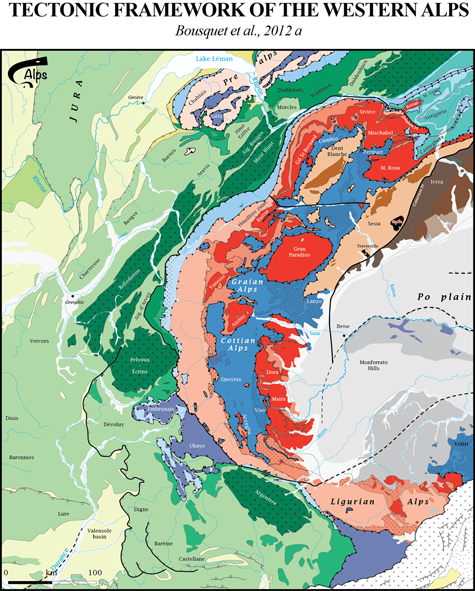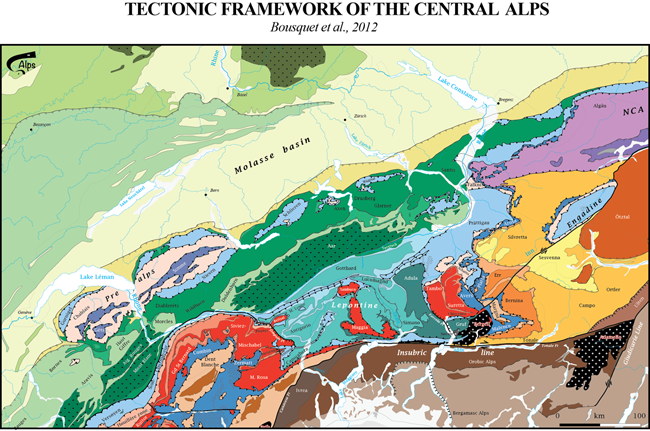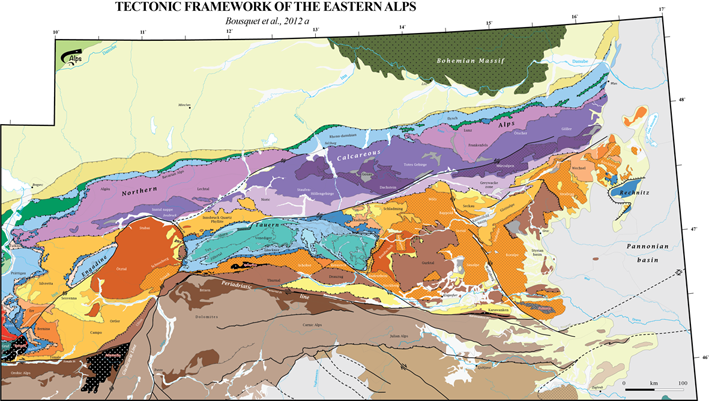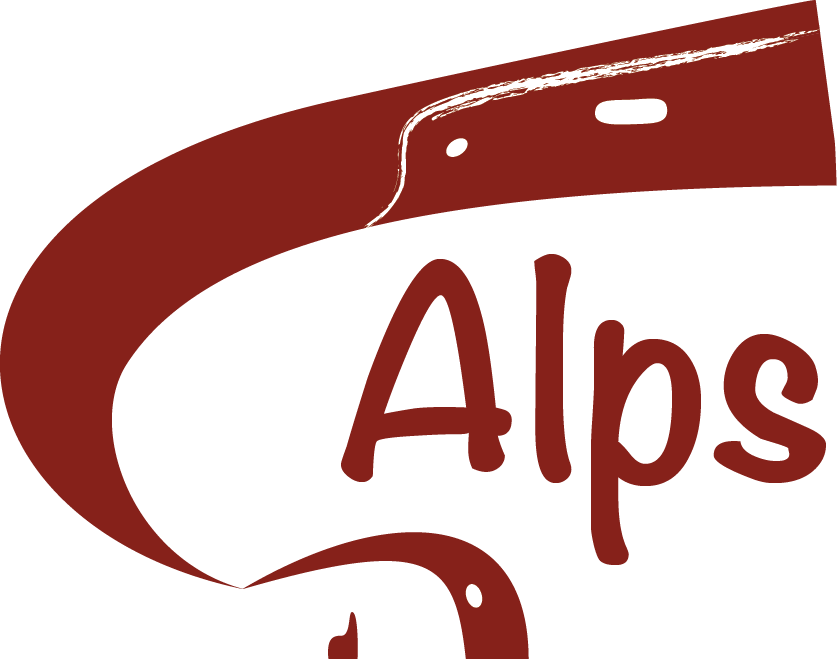GeodynAlps
Some informations about the geodynamics of the Alps

The map allows to clearly identify several points of the European Alps.
A subdivision of the Alps in two parts, individualized according to the major tectonic directions: a European-verging Cretaceous-tertiary belt and a south-vergent Neogene age, the Southern Alps.
These two parts of the belt are separated by the Periadriatic fault system, which consists mainly of three major line: the Periadriatic line in the strict sense in the East and the line Insubric in the West, both east-west oriented and the Giudicarie line north-south oriented.
The different units
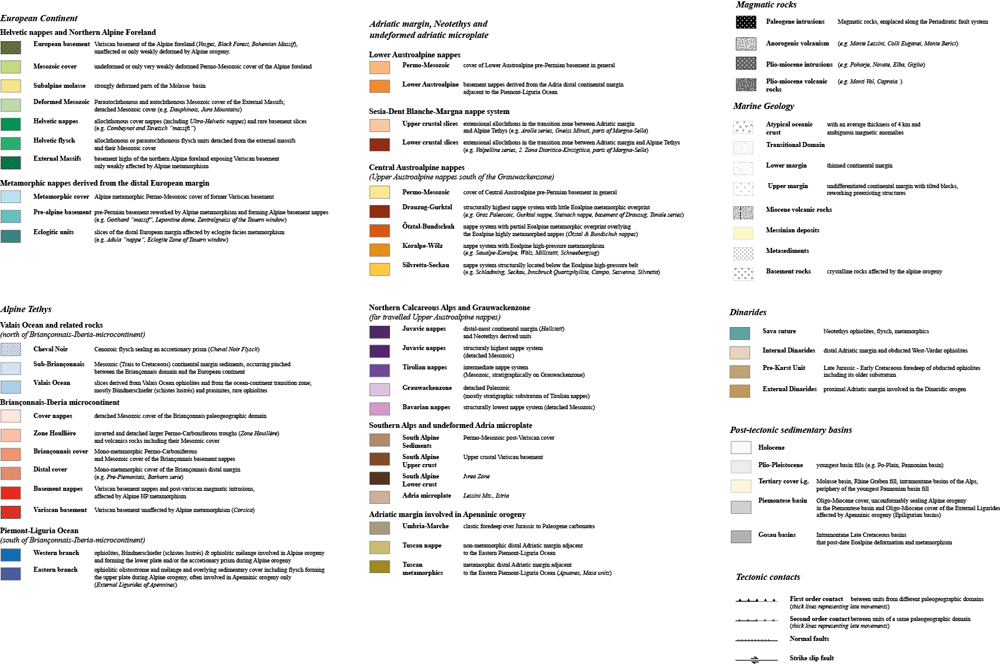
download it
In the European-verging belt (north or west), two areas are clearly identified: the Eastern Alps, consisting mainly of Austro-Alpine units and the Central and Western Alps in which are accreted Penninic and European units.
- The Austro-Alpine nappes form the units north of the line Insubric and are outcroping in eastern Switzerland to Austria. Often considered to be of the same paleogeographic origin as the Southern Alps, they were, at least in part, isolated from the Southern Alps by the Meliata-Halstatt ocean, part of the Neo-Tethys. The Austro-Alpine nappes were the first units that were accreted to the southern margin (Apulia) during the Alpine orogeny, during the Cretaceous.
- The Pennine nappes form a set of heterogeneous origin containing paleogeographic remnants of Tethyan oceanic lithosphere and continental fragments from the Brianç. Penniques units are thus formed by all palaeogeographic domains respectively located between Europe in the North and Apulia in the south. Most of these units were metamorphosed, except, notably, the Prealps and the Helminthoid flysch, units thrusted to the north or west at the Eocene time.
Long considered a classic example of an orogen derived from the Tethys, the Alps are in fact the product of two orogenies, the first Cretaceous, which mainly form the eastern Alps, followed by a second, Tertiary, giving rise to the Central and Western Alps. These two orogenies are related to the evolution of two different ocean systems:
- To the east, Meliata-Halstatt ocean (Neo-Tethys) plunges below the plate Apulia. Its closure is the Cretaceous orogeny.
- To the west, an Alpine Tethys formed in the Middle Jurassic, an eastern extension of the central Atlantic Ocean, the ocean Piemont-Ligurian and middle Cretaceous, the Valais ocean. The closure of the Alpine Tethys (Piemont-Ligurian and Valais oceans) is the tertiary orogeny.
The Alpine belt results of the history of different oceanic basins and the reconstruction of major paleogeographic domains from the current tectonic units is sometimes a big challenge. In the first approach, the Eastern Alps consist essentially of the Austro-Alpine nappes, while the western Alps are almost exclusively composed of more external units structurally deeper, belonging to the margin European, the Briançonnais microcontinent and the associated oceans.
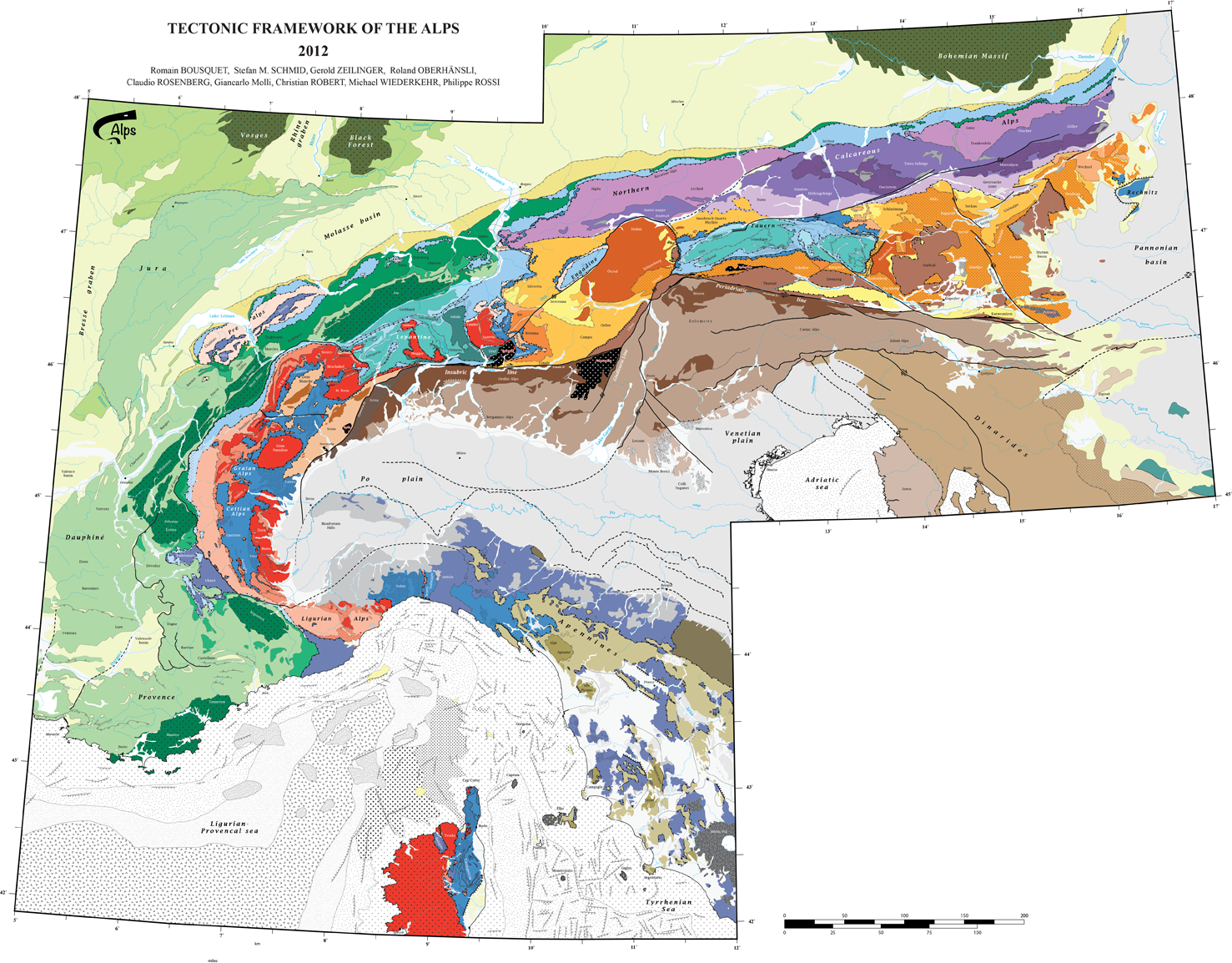
click on the picture for more details or to zoom
To discover the deep structure, with the help of the interpretation of the 4 seismic lines of the Alps
|
Location of the profiles
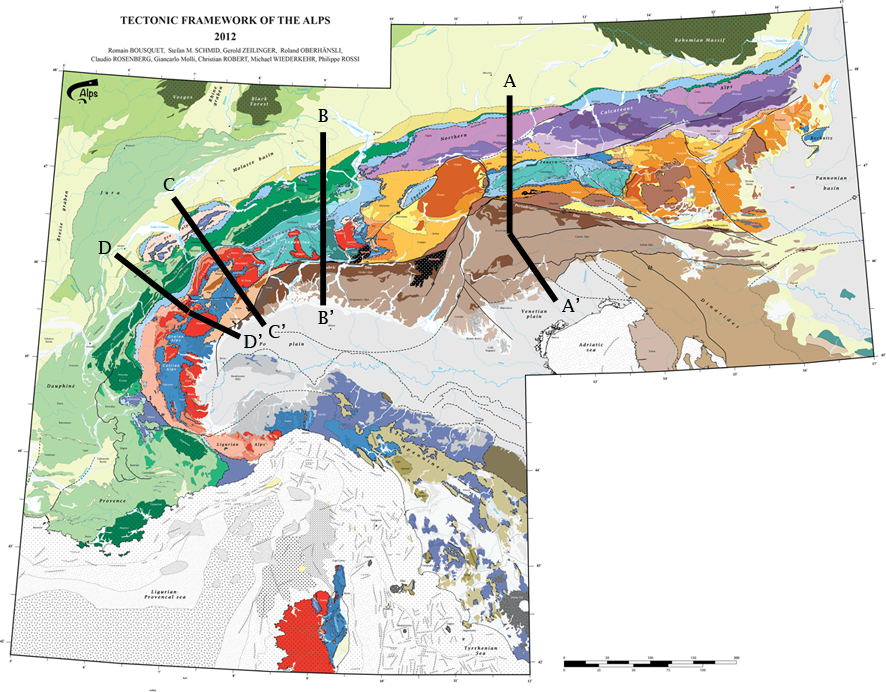
|
The four profiles
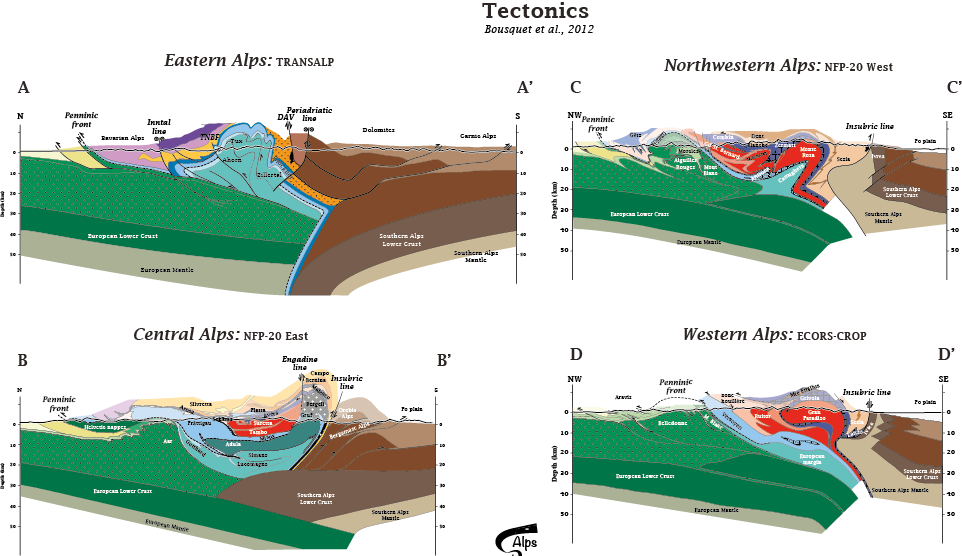
|
|
TRANSALP
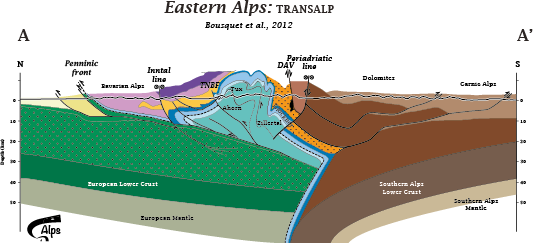
|
NFP20-East
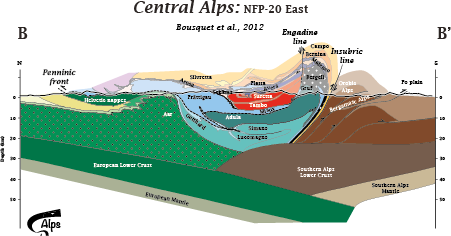
|
NFP20-West
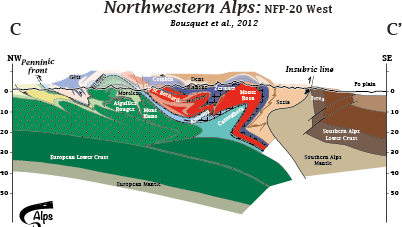
|
ECORS-CROP
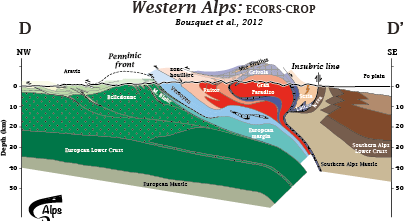
|
If you are interested only by some part of the belt
To cite documents from this page
Bousquet R., Schmid S.M., Zeilinger G, Oberhänsli R., Rosenberg C., Molli G.,
Robert C., Wiederkehr M., Rossi Ph., 2012, Tectonic framework of the Alps, CCGM/CGMW. http://www.geodynalps.org









